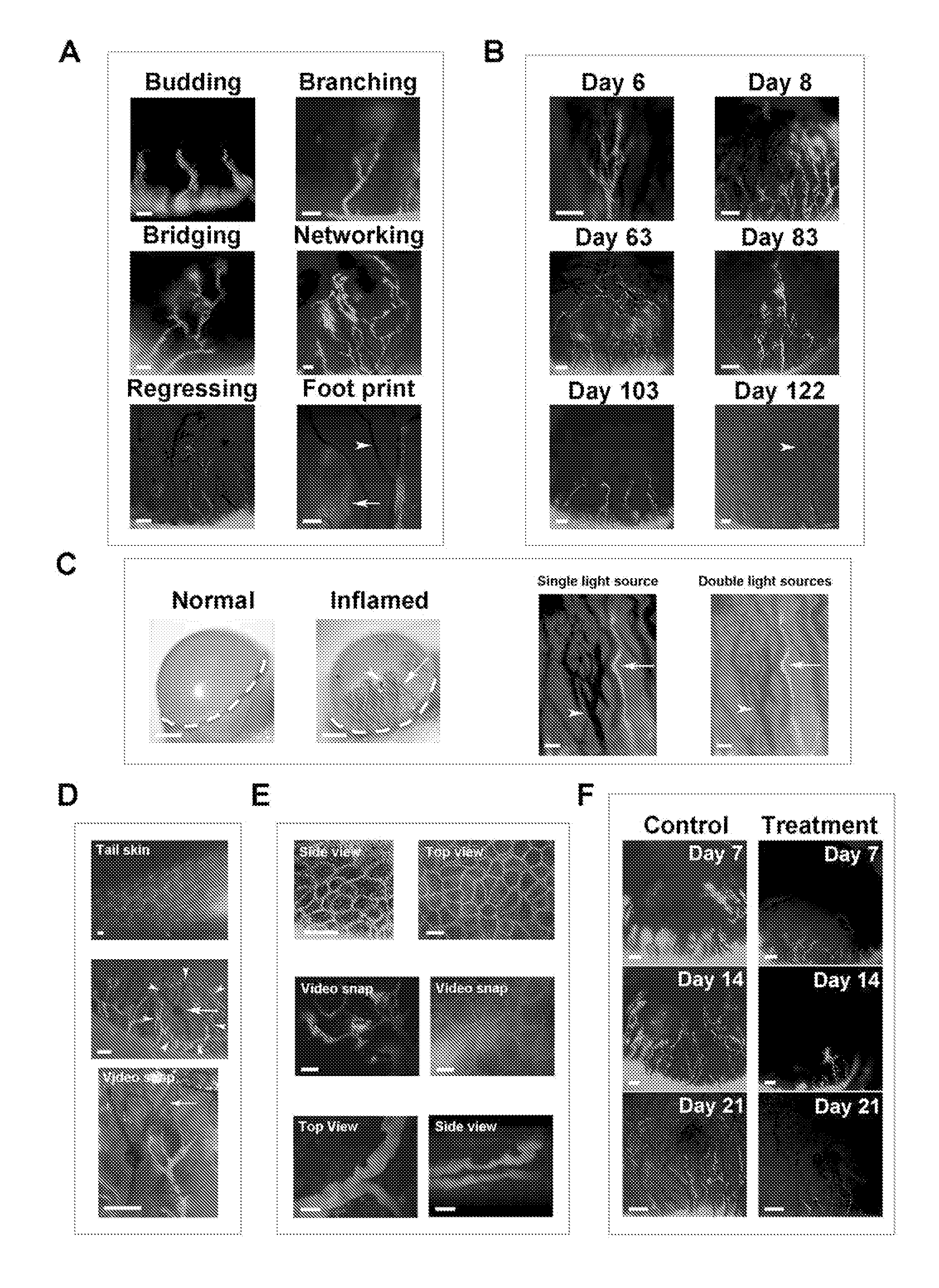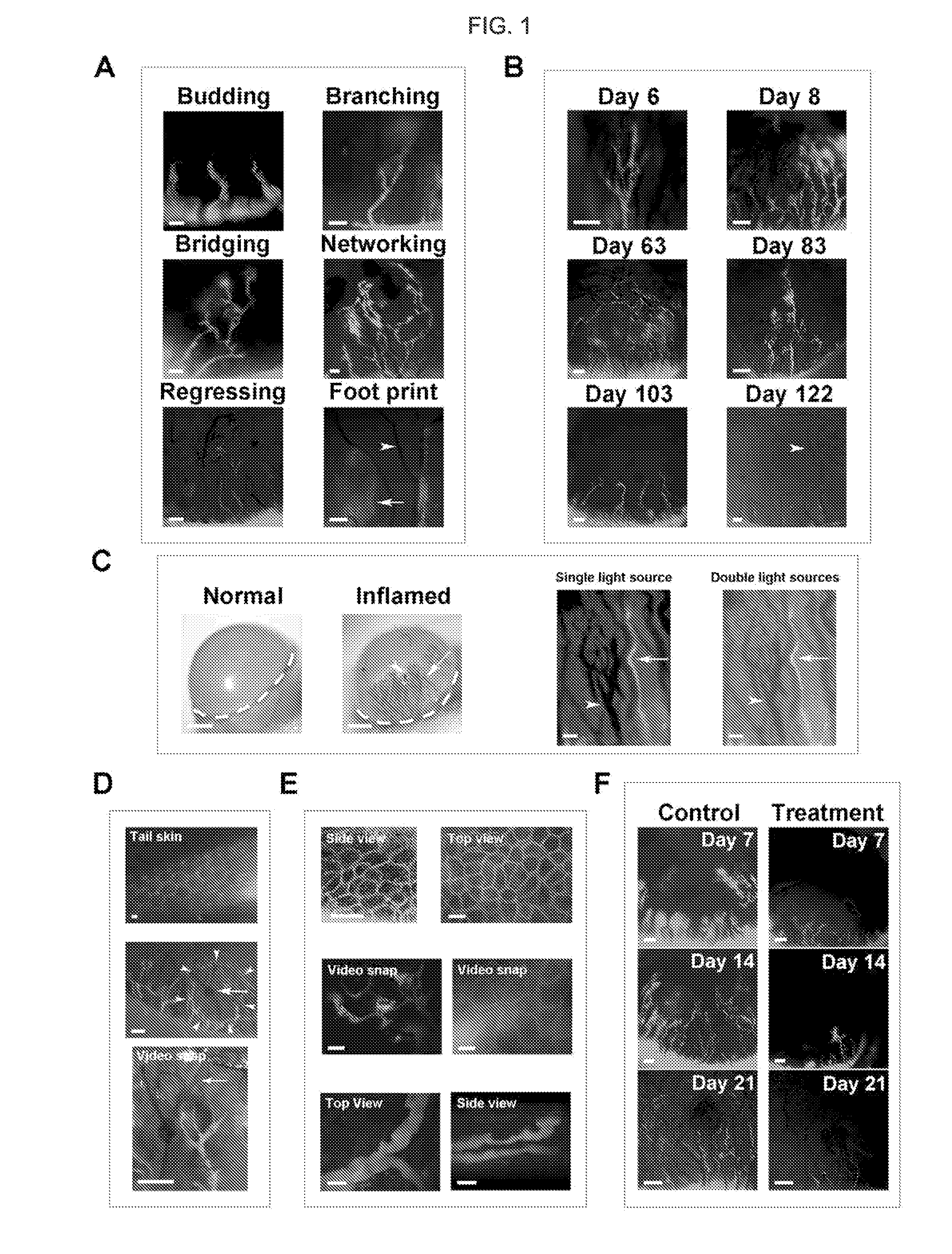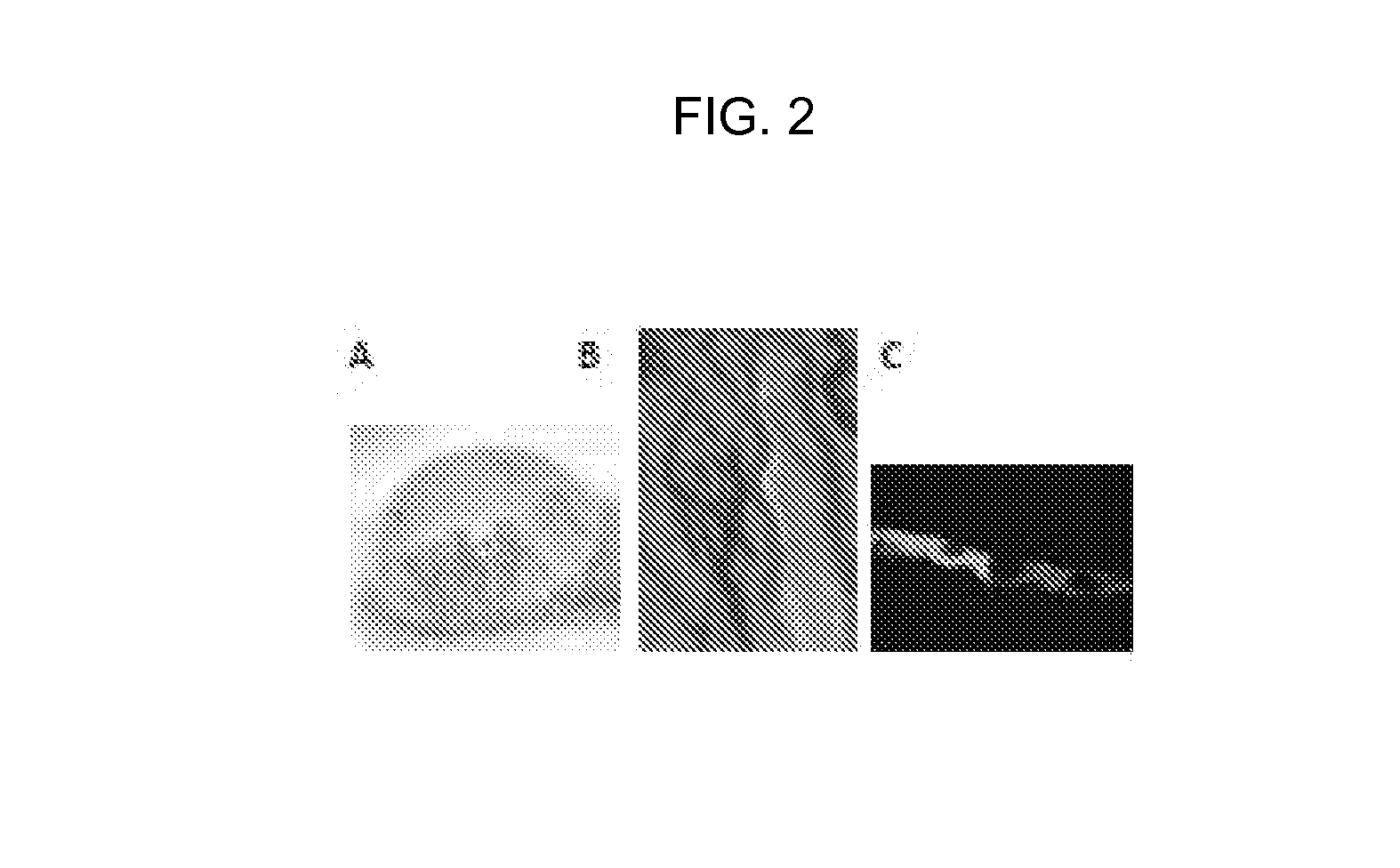In vivo visualization of lymphatic tissue
a lymphatic tissue and in vivo technology, applied in the field of in vivo visualization of lymphatic tissue, can solve the problems of poor lymphatic disease treatment effect, long time-consuming and laborious, and long time-consuming, and achieve the effects of improving the quality of li
- Summary
- Abstract
- Description
- Claims
- Application Information
AI Technical Summary
Benefits of technology
Problems solved by technology
Method used
Image
Examples
example 1
A. Example 1
Visualization of Lymphatic Vessels in the Cornea of a Subject
[0092]To induce inflammatory lymphangiogenesis and hemangiogenesis in the cornea, a suture protocol was employed, as described above. Corneal lymphatic vessels were visualized by subconjunctival injection of large molecular weight fluorescein isothiocyanate (FITC)-labeled dextran. The dye uptake was continuously monitored under a custom-built live imaging system with an adjustable eye and head holder to secure steady pictures while the mouse was breathing. Two types of live imaging systems were tested: 1) a non-contact live imaging system with a fluorescent stereomicroscope, and 2) a more advanced live imaging system with a two-photon excitation microscope. As demonstrated in FIG. 1, while the non-contact system was able to produce high quality images (Panels A-D, F) and a video without touching the cornea, the highly advanced two-photon system yielded more depth-sectioning and cellular details of the tissue an...
example 2
B. Example 2
Visualization of Both Lymphatic Vessels and Blood Vessels in the Cornea of a Subject
[0095]Since blood and lymphatic vessels often accompany each other, and it is important to evaluate both structures in many studies, the advantage of the subject methods over ophthalmic slit-lamp microscopy, which is commonly used in both research laboratories and clinics, was demonstrated. As demonstrated in FIG. 1, Panel C, while only blood vessels (arrow) were detectable by slit-lamp microscopy (left two images), both blood (arrowheads) and lymphatic vessels (arrows) were clearly revealed by the subject methods (right two images). While blood vessels appeared in dark shadows under the FITC fluorescence excitation source alone, they showed up in their natural red color under the combined light sources in an LED bright field view. Moreover, the images obtained by the subject methods were of better resolution and quality. The FITC-dextran labeled vessels in live corneas expressed LYVE-1, ...
example 3
C. Example 3
Advantages of Live Imaging of Lymphatic Vessels in the Cornea Over Other Non-Transparent Tissues, Such as the Skin
[0096]The advantages of live imaging of lymphatic vessels in the cornea over other non-transparent tissues, such as the skin, which is normally endowed with lymphatic vessels, were demonstrated. As shown in FIG. 1, Panel D, live imaging of tail skin, a site used for lymphatic imaging in previous studies, revealed a cross-sectional view of the lymphatics, which was obscured by a layer of body hairs (FIG. 1, Panel D, upper image). In contrast, imaging within the cornea, a transparent tissue that is free of any pre-existing or background vessels, showed an entire tree of newly formed lymphatic vessels from their peripheral roots to central branches (FIG. 1, Panel D, middle image). This method also enabled the observation of the lymphatic vessels in the context of their local and physiological environment, which also harbored newly formed blood vessels and the si...
PUM
 Login to View More
Login to View More Abstract
Description
Claims
Application Information
 Login to View More
Login to View More - R&D
- Intellectual Property
- Life Sciences
- Materials
- Tech Scout
- Unparalleled Data Quality
- Higher Quality Content
- 60% Fewer Hallucinations
Browse by: Latest US Patents, China's latest patents, Technical Efficacy Thesaurus, Application Domain, Technology Topic, Popular Technical Reports.
© 2025 PatSnap. All rights reserved.Legal|Privacy policy|Modern Slavery Act Transparency Statement|Sitemap|About US| Contact US: help@patsnap.com



